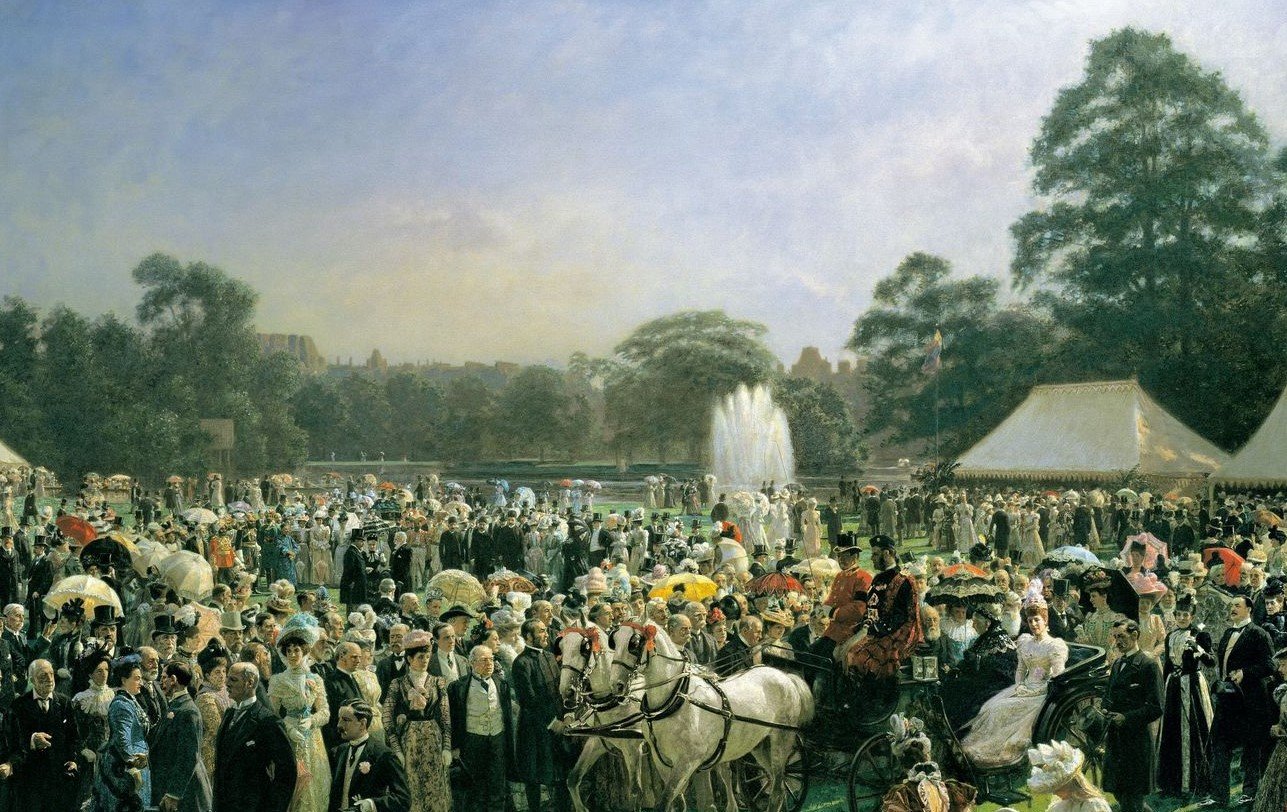
Royal Gardens
Depictions of the gardens at Windsor Castle and other royal residences
The Waterloo Vase
1819-30RCIN 68600
As well as hosting public events, the gardens at Buckingham Palace have also been used for other purposes, including as a helicopter landing pad in more recent times. In 1939, the gardens served as the perfect backdrop for a series of elegant photographs of Queen Elizabeth (later Queen Elizabeth The Queen Mother) by the celebrated society photographer Cecil Beaton. In the example shown here, the Queen is depicted wearing a white tulle and lace gown with matching wide brimmed hat holding a parasol beside the Waterloo Vase.
Napoleon had seen the block of Carrara marble and ordered a colossal vase to be carved with scenes of his great military victories. Following Napoleon’s defeat at the Battle of Waterloo, the unfinished vase was sent to Britain and George IV commissioned Sir Richard Westmacott to carve the vase with scenes from the closing stages of the Battle of Waterloo, intending for it to stand in the Waterloo Chamber at Windsor Castle.
Standing at nearly 5.5 metres high, 3 metres wide and weighing around 40 tonnes, the vase was too heavy to be displayed at Windsor and so an alternative venue had to be sought. First placed in the National Gallery by William IV in 1835, it then moved to Gloucester Gate in Hyde Park, into store at the South Kensington Museum (now the V&A), and then, finally, in 1903, King Edward VII installed in the gardens of Buckingham Palace where it has remained ever since.







